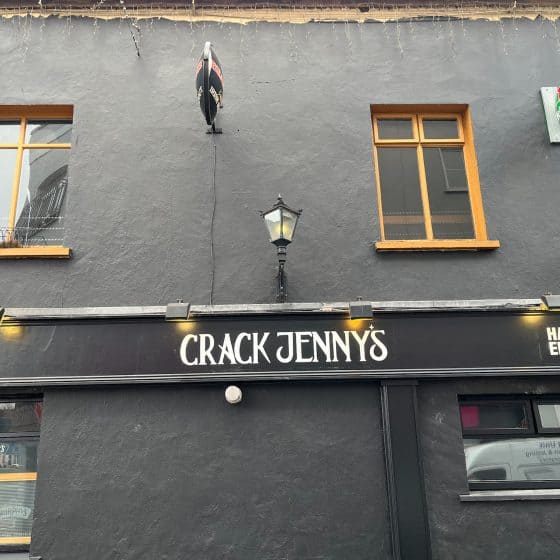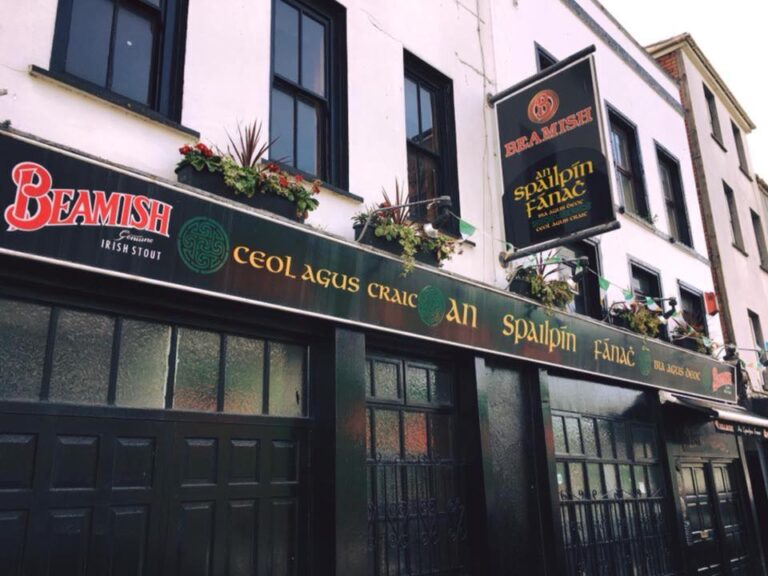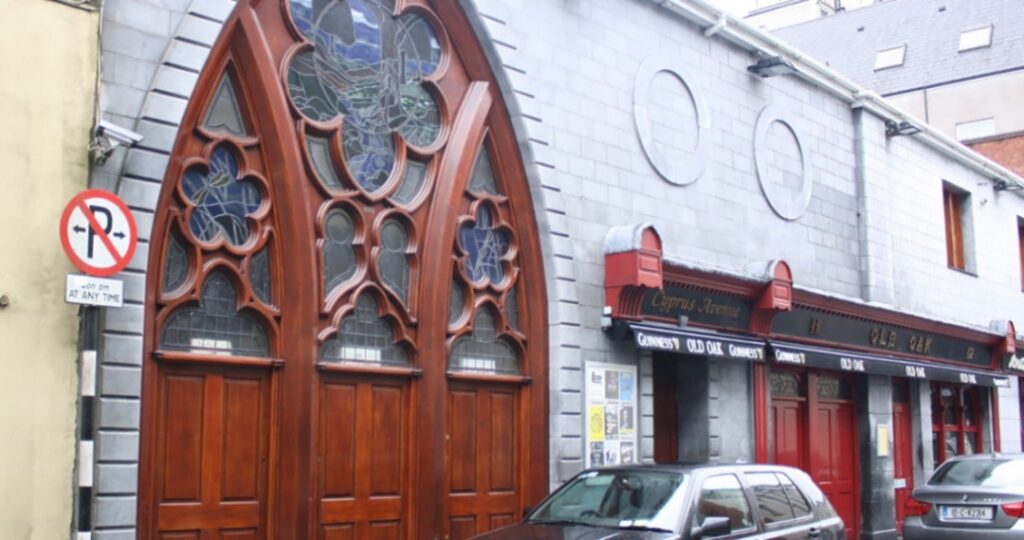As we move into a new year, and hopefully a new era as societal attitudes towards the importance of electronic music in our national culture gradually begin to change, we stand at a crossroads, where our next steps will determine the landscape of electronic music for years to come. To best proceed, we must consider where we currently stand and where exactly we would like to go. This three-part series of articles explores the current situation, potential solutions, and the hurdles we must overcome to achieve our goal.
Part 1: The Lay of the Land.
Positivity abounded in various social and professional circles in recent months, as impending updates to Ireland’s archaic licensing laws were announced to much fanfare. With headlines seeming to suggest clubs nationwide would be soon keeping the music going until long after the dawn chorus, one would be forgiven for feeling as though the battle had been won and the party could begin.
While this positive sentiment has provided much-needed relief to the collective consciousness after a more-than-turbulent couple of years, as we look to 2023 and beyond we must remain cognisant of the stark challenges we face as a community and industry, on both a local and national level.
Thanks to the tireless work of Sunil Sharpe & Robbie Kitt of Give Us The Night, we will indeed be facing a position where it will be legally permissible for music to continue until 6am in the near future, however, whether this will ever come to fruition in Cork is dependant on serious
collective action.
The last 20 years have seen a huge demise in the number of nightclubs operating in Ireland, thanks to a combination of economic, regulatory, and cultural factors. As we hope to move into a new era in the coming years it seems evident that a successful club will have to be community-led, driven by those most passionate about the music that is played in the club. The space should be functional, profitable, and music-focused, and should be able to avail of extended opening hours.
To understand how best to achieve this goal, it is best to examine the current landscape on Leeside, to appreciate the issues facing the community currently. The most prominent development in Cork’s electronic music scene recently, unfortunately, was the closure of Dali during the early days of the COVID-19 pandemic.

During its two years of existence at Carey’s Lane, Dali platformed local, national, and international electronic artists across a wide musical spectrum, with underground acts performing there on a weekly basis. Their desire to seek out and book alternative and lesser-known acts was highly admirable in a tough economic climate, and for those all-too-brief two years, Dali functioned as an incredibly important hub for the electronic music community in Cork. The COVID-19 pandemic and its associated financial burden signaled the end of this venture, with the space now operating as a late-bar type venue under the command of a well-known cork publican.
Having lost this venue during the pandemic, local artists had to look elsewhere upon the easing of restrictions last year. Crack Jenny’s, a new space overlooking the Lee on Lavitt’s Quay, has emerged as a vital space for young artists to perfect their craft in front of an enthusiastic audience. With a policy of being open to all event types, the space has facilitated events spanning house, techno, drum & bass, and beyond since its opening in March 2022.

An Spailpín Fanach on South Main Street has also re-emerged as a popular space for electronic music, with various collectives hosting events there over the past 12 months. While these spaces have provided an important location for a creative outlet, they are both essentially ‘rooms-for-hire’ and lack certain key features of purpose-built nightclubs, including inbuilt sound systems and lighting, and critically both venues do not regularly have late-night exemptions, meaning events are restricted to 11:30pm closing on weekdays and 12:30am closing on weekends.
Other spaces in Cork which have been utilised for dance music include the Bru Bar on McCurtain Street, Mason on Tuckey Street (events here are currently run by those behind Dali), and the Roundy. These spaces again lack the all-important regular late exemption, so despite the fantastic efforts of all involved, there is certainly a DIY feel to all the gigs currently happening in Cork. The fact that all these venues have been able to survive and thrive is a testament to the resilience of the electronic music scene in Cork, as well as the desire of the community for a space to hear good music and dance.

Part of what defines each of these venues is their intimate capacity. While this is befitting of events showcasing local artists, it makes the booking of international artists untenable for independent promoters. A consistent rotation of high-quality national and international artists is critical in fostering connection and diversity across musical styles and disciplines. As well as serving as a source of artistic inspiration for local creatives, while these venues have played an undoubtedly invaluable role in keeping Cork dancing over the past year, and will continue to do so in the future, they cannot solely provide what Cork as a city needs in terms of a night-time culture. Due to their size and current licencing restrictions, these venues will not be benefitting from 6am closing times either.
From examining these venues it is clear that a larger space is desirable in Cork. Of course, a few large premises are present in Cork’s central business district, along Washington Street, the Grand Parade & Oliver Plunkett Street, but these venues focus on the commercial market and would be unlikely to take risks on alternative music nights.
To the uninitiated, these venues may seem to provide the solutions sought by the Electronic Music Council, with regard to the fact that these are large venues where loud music is played late at night, however, it is clear to those involved in the electronic music community that these venues cannot support a music-focused culture. It is imperative that a distinction between a commercial, late-bar type venue and an electronic music club be made clear to all those involved in public discourse surrounding night-time culture.

These venues are entirely commercial entities, too, and even with the current situation the margins are tight. In a recent interview, General Manager of the Rearden’s Group, John Styles, reckoned that ‘the market isn’t here’ to allow their venues to stay open later, should laws change.
Mr. Sykes also raised the important issue of staffing levels and costs, as staying open later would not only increase costs but would also be more taxing on employees. Therefore making the situation even more difficult to navigate in terms of securing sufficient quantities of workers to keep these large, multi-story venues in operation until the early morning. These issues are relevant to any would-be late-night electronic music club also and must be duly looked at.
While commercial clubs will never provide what is required for the electronic music community on an artistic and creative level, their experiences and the issues they face must be acknowledged and learned from by those within our scene, for the similarities in the industries are obvious.
One venue which has accommodated some performances by major electronic artists this year is Cyprus Avenue, notably playing host to Overmono during their live tour in October. Having undergone significant renovations in the last few years, the venue can now accommodate 600 patrons.
While the shows that occur here are very welcome, given the size of the venue, it requires very well-known acts to fill, and thus typically only hosts electronic artists on particularly busy nights, such as the Jazz weekend and certain student nights, which can be guaranteed to garner a large turnout. As such, it, too, cannot provide a consistent solution to what Cork needs going forward.

Having conversed with many promoters and artists in Cork, a consensus seems to exist as to what is required. A potential venue must have the scope to support both local and international acts, so for this, a capacity of 3-400 would be necessary. It must have a permanent, fit-for-purpose
sound system, with accompanying lights & visual FX. It must have a formalised booking policy, encompassing diversity, inclusivity, and artistic merit. It should be open several nights every week to cater to various crowds and should be able to avail of extended opening hours in the future. In addition, a space with multiple rooms would allow for the development of more niche sounds and communities.
As Ireland’s second-largest city, Cork has the capacity to support such a venture if implemented correctly. Venues like this exist throughout Europe, and if we are to compete with other cities in terms of a night-time culture it is vital that we have a suitable space for this. Part 2 of this article series will delve deeper into the barriers currently preventing the ideal club from opening up.
Article originally featured on Four/Four Magazine:
https://fourfourmag.com/opinion-the-start-of-a-new-era-2023-brings-cautious-optimism-from-corks-electronic-music-council/

[…] is the final part of a 3-piece article series. Part 1 can be read here, followed by part […]